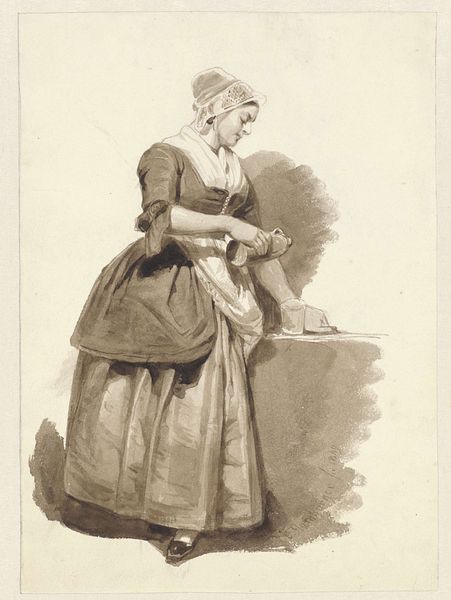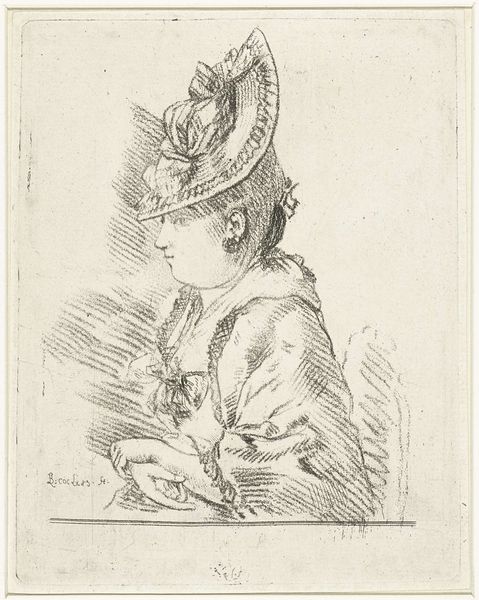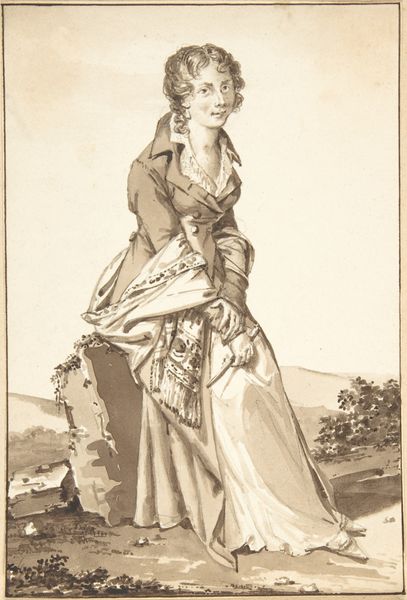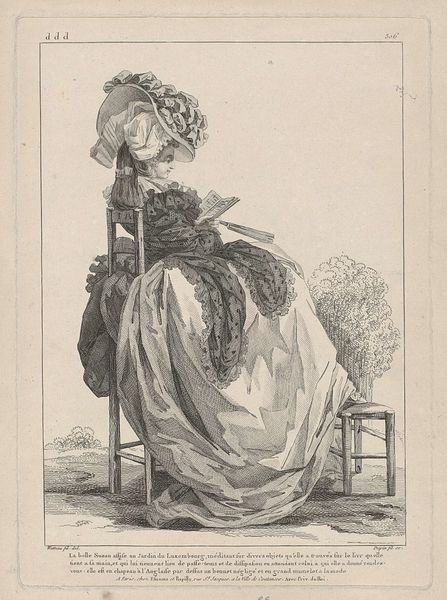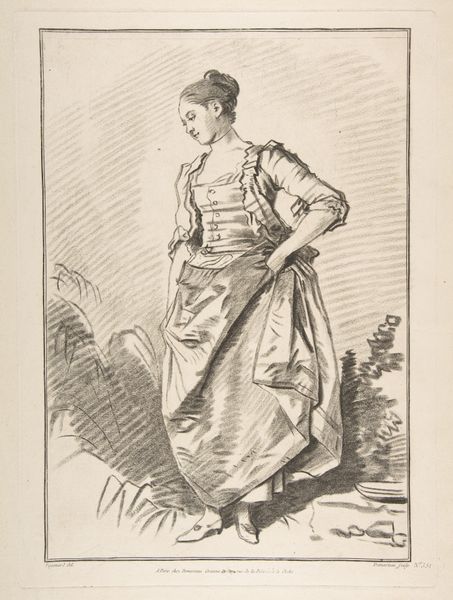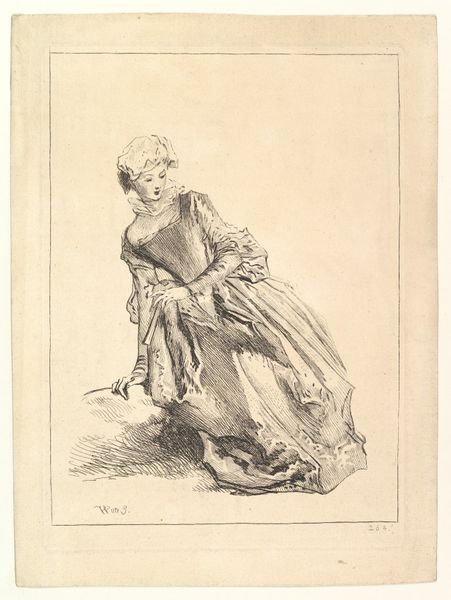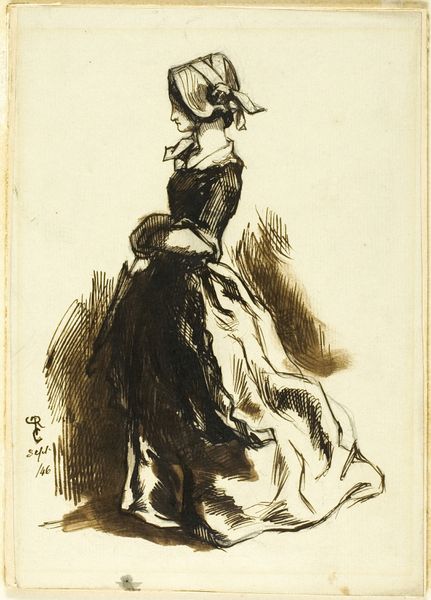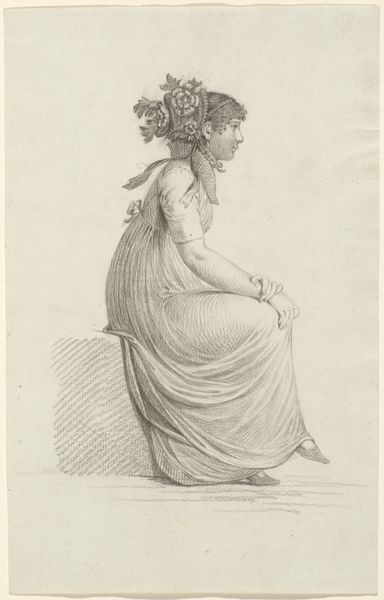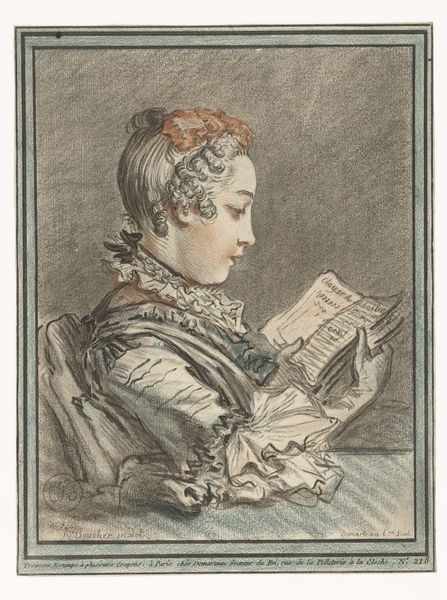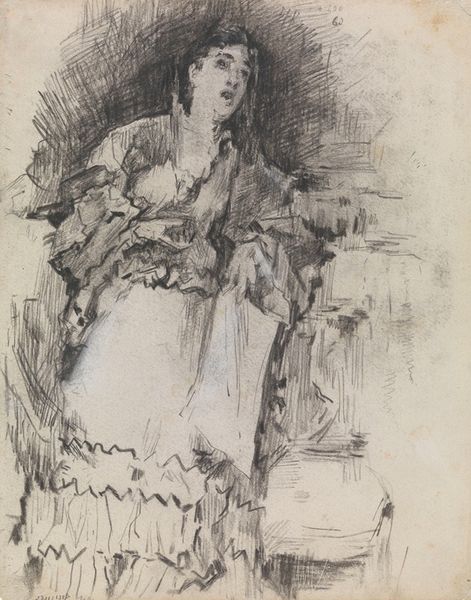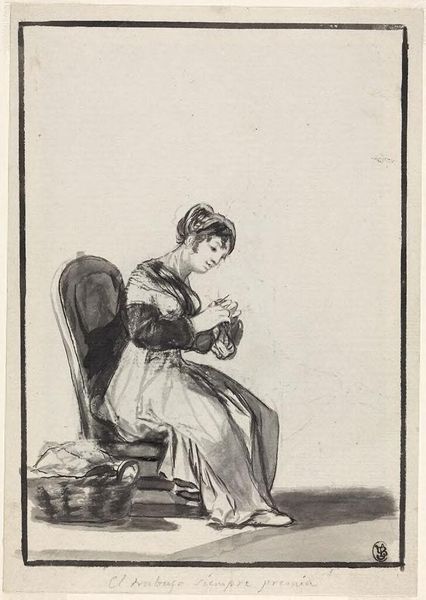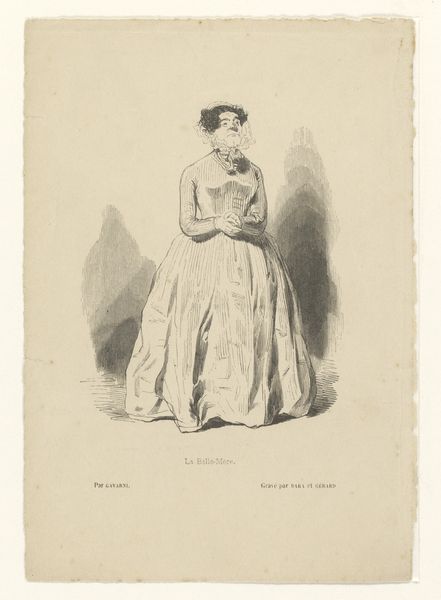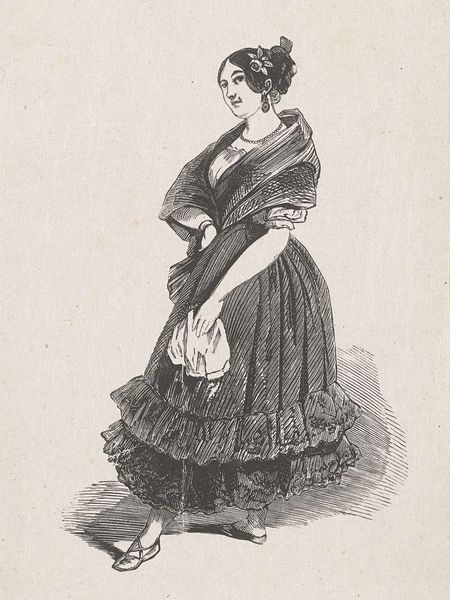
Dimensions: Sheet: 6 5/16 x 5 3/8 in. (16 x 13.6 cm)
Copyright: Public Domain
Curator: Immediately, I notice the sharp contrasts in the engraving – almost like harsh morning light. There’s a tangible sense of immediacy, of being caught off guard. Editor: That's an interesting observation. We're looking at "Surprised Woman from Hogarth's 'Morning,'" engraved by Richard Livesay in 1788, and it’s currently held at the Metropolitan Museum of Art. Considering the date, this likely engages with emergent Romantic sensibilities but remains rooted in established printmaking traditions. Curator: Yes, but Livesay’s mark-making grabs me here. It’s not just about visual representation; the line *is* the subject. It's crude, almost rushed in places, which serves to accentuate her visible, applied beauty marks and overly extravagant morning dress, thereby heightening the satire intended. What materials and labor went into reproducing Hogarth's image on the plate to cheaply reproduce copies of the print? How much did these prints circulate, shaping perceptions and solidifying a visual vocabulary that we still engage with today? Editor: Those are good questions about production and dissemination. Viewing this from a historical perspective, prints like these played a crucial role in shaping social discourse. Consider its location of publication, noted at the bottom as being, “Published Oct. 1788 by The King: New Broad Street.” We also cannot neglect how its availability shaped and reflected the values, moral standards, and emerging social critique during its time. How did it comment on wealth, vanity, and the burgeoning consumer culture that London embodied then? And furthermore, where was it displayed and who was able to purchase and circulate it within their community? Curator: Exactly. So it becomes more than just a pretty picture – the physical properties, the method of replication, they actively create meaning, reflecting a moment in consumer and visual culture. To grasp fully the essence and societal relevance requires comprehending the manufacturing processes, which would then underscore an evaluation of its enduring impact as a tool to navigate a transformative epoch. Editor: I agree, by delving into that complexity, we enrich our interpretation and appreciate its continued value in offering reflections on contemporary values and cultural narratives. Curator: Indeed, thank you. It adds a rich texture to how we see her, the art, and ourselves. Editor: A beneficial deep dive, undoubtedly!
Comments
No comments
Be the first to comment and join the conversation on the ultimate creative platform.
